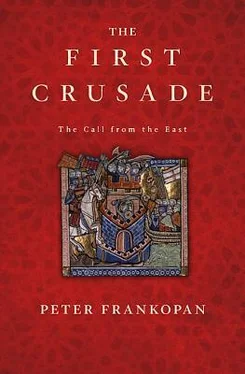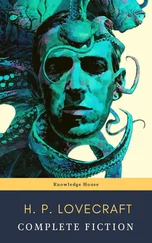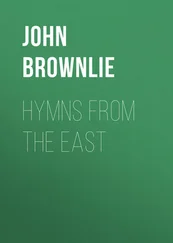Heavy increases in taxation were introduced to cover the mismatch between revenue and expenditure. According to one Byzantine commentator, officials were appointed to gather taxes by inventing debts that needed to be paid off. Failure to meet these phantom obligations was used as a pretext to confiscate property and to provide yet another shot in the arm for the imperial treasury. 22These tax rises had devastating consequences. The increased obligations resulted in death, famine, depopulation and homelessness. In some cases, according to the patriarch of Antioch, it had caused people to join ‘the barbarians who murder Christians, judging that servitude and life with them was more palatable than with us’. 23
Even the monks on Mount Athos attracted the attention of an emperor desperate for funds. Athos was home to several monastic communities, and the monks had accumulated an impressive range of land and property and proved adept at gaining exemptions from taxes. The lands they owned were concentrated in one of the few regions of the empire that had not come under pressure from the Normans, Pechenegs or Turks. These territories were also amongst the few places where productivity had not declined in the late eleventh century, and in 1089 Alexios turned to them to raise money. Three charters record the introduction of a new charge, the epibole , which made fresh demands on landowners. Those who could not or would not pay immediately were penalised, amongst them the monastery of Iviron on Mount Athos, which had lands of almost 20,000 acres confiscated by the emperor. 24
By the time the situation in Asia Minor started to deteriorate at the start of the 1090s, Alexios had run out of options. Debasement of the coinage had reached a nadir, while central government had been stripped to the barest bones to save money. To make matters worse, around the start of 1091, Crete and Cyprus, the two largest and most important islands in the eastern Mediterranean, rose up in revolt against the emperor and declared effective independence from Constantinople. This rebellion was the result of heavy overtaxation. 25Raids on the north-western frontier likewise put yet more pressure on the embattled emperor – as well as stretching Byzantium’s resources further still. 26
At the start of 1092, Alexios reached a decision that was to have a major impact on the history of the eastern Mediterranean. During the Norman attacks of the 1080s, the emperor had worked closely with Venice, with Venetian ships patrolling the Adriatic to prevent Norman supplies crossing over from southern Italy to provision the invaders, in exchange for an upfront payment. 27Alexios issued a series of grants to ensure further co-operation during the Norman assaults of 1081–5, which included the award of titles to the doge as well as an extension of Venetian authority in the Adriatic to include Dalmatia. 28
Desperate to stimulate the empire’s financial system, Alexios concluded that this could only be achieved with a major injection of foreign capital. In the spring of 1092, therefore, the emperor issued a grant giving a sweeping set of privileges and concessions to Venice. 29The ruler of Venice had used the title of doge of Venice and Dalmatia and imperial protosebastos in the 1080s; after 1092, however, he was also granted jurisdiction over Croatia in a further enlargement of Venetian authority – an important concession from Constantinople. This was further reinforced by the doge being given the right to pass these new honours on to his successors. 30In addition, the churches of Venice were to receive funds, with St Mark’s singled out for particularly generous treatment to help pay for the major restoration works undertaken at the start of the 1090s in advance of its imminent reconsecration. Part of the quayside in Constantinople, stretching from the Gate of the Hebrews to the Vigla tower, was to be set aside for the exclusive use of Venetian traders, with provision for similar arrangements in a range of other ports in the empire, including Antioch, Laodikeia, Tarsos, Mamistra, Attaleia, Athens, Corinth, Thebes, Thessaloniki and Dyrrakhion. 31This gave Venice a significant competitive edge over other Italian city-states in the eastern Mediterranean.
Yet Alexios’ grant went further, as he offered unprecedented incentives to encourage Venetian traders to invest in Byzantium. For example, immunity was awarded to protect against claims made on the properties they were given. 32All taxes on Venetian shipping and the goods they were transporting, imports and exports alike, were removed. 33By not giving similar concessions to Amalfi, Pisa and Genoa – other Italian city-states with important trade links with the empire – the emperor provided Venice with a major competitive advantage and incentive to boost their investment in Byzantium. So significant was this development that the patriarch of Grado himself, the head of the church in Venice, journeyed to Constantinople in the spring of 1092, presumably to witness the signing of the trade privileges in person. 34
Alexios’ move was another one of his gambles. There was the risk that other Italian city-states might demand the same terms. There was also the question of how to cancel or modify the terms of this generous grant in the future, to which the emperor seems to have given little thought in 1092. More significant in the short term was that the advantage handed to Venice placed further pressure on Byzantine merchants, as the widening of margins for the Italians made them dangerously competitive to local traders.
It is difficult to quantify the impact of the grant, but it is no coincidence that shortly after awarding the trading concessions, Alexios undertook a complete overhaul of the Byzantine monetary system. In the summer of 1092, the hyperpyron (literally’ ‘refined gold’), a new high-value coin, was introduced alongside several lower denominations, fixed in value in relation to each other. Although the new coins appeared only in limited numbers to start with, the re-coinage was a prerequisite for international exchange, as a stable currency was essential for foreign trade. Reforming the tattered currency was also crucial for the recovery of the severely depleted economy which had been battered by successive debasements which left little clarity over what the coinage was actually worth. Whether or not it would resuscitate the empire’s ailing aristocracy was another matter.
* * *
There had been remarkably little opposition to Alexios I Komnenos in the first decade of his reign. In spite of the difficulties posed by Byzantium’s neighbours and the worsening economic situation, the emperor was not put under serious pressure in Constantinople. Criticism of Alexios after the fall of Dyrrakhion in 1082 did not turn into direct action against him, and nothing came of the rumours of plots against the emperor which circulated in the capital in the winter of 1083. 35Nor did a disastrous expedition to the Danube region a few years later prompt rebellion, even though the emperor was wounded in battle and had to hide one of the empire’s most revered relics, the cape of the Virgin Mary, in a bed of wild flowers to prevent it being captured by the Pechenegs. 36
The passivity of the ruling elite in the 1080s is all the more striking when set against the disturbances of the previous decade, when the empire was racked by civil war as several magnates took turns to try to seize the throne. This apparent calm was partly caused by the sharp decline in the fortunes of the aristocracy during this period. The removal of salaries, the collapse of independent incomes from lands which had come under pressure from raids by Byzantium’s neighbours, and the unstable financial system had significantly weakened the empire’s elites. But the failure of the aristocracy to challenge Alexios was also the result of the new emperor’s grip on the realm. Carefully targeted confiscations of property at the outset of his reign made it clear to potential rebels that dissent came at a high price. Those seen as a threat were dealt with ruthlessly; as the deposition of two patriarchs in the first three years of Alexios’ reign showed, the new emperor would not tolerate signs of mutiny or disloyalty.
Читать дальше











